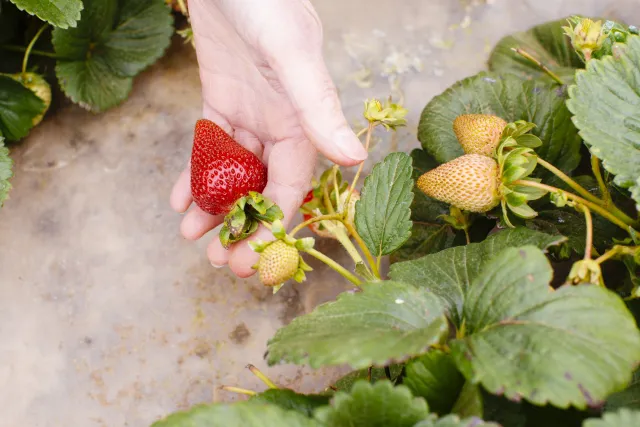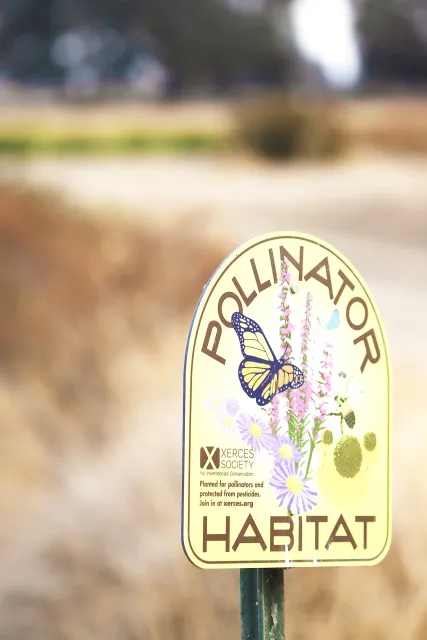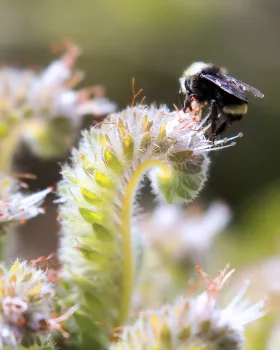As food prices continue to rise, many of us are turning to our backyards or patios to grow fresh vegetables. But did you know that planting vegetables alone might not be enough? To get the most from your garden, you need pollinators – those busy bees, butterflies, and other creatures that help your plants produce food.
Why Pollinators Matter for Your Vegetable Garden
Pollination happens when pollen moves between flowers, either by wind or with help from animals like bees, butterflies, birds, and even bats. This natural process leads to seeds and fruits forming on plants. Many of your favorite vegetables and fruits wouldn't grow properly without it!
According to Pollinator Partnership, one-third of the food we eat depends on pollinators. That includes many of your common garden favorites:

- tomatoes
- squash and pumpkins
- cucumbers
- peppers
- eggplants
- berries
- apples
- melons
- zinnias
- sunflowers
- lavender
- cosmos
- marigolds
- borage
- bee balm
Without enough pollinators visiting your garden, you might notice several issues that can affect the quality and quantity of your harvest. For example, fruits and vegetables may become misshapen, fall short of the usual size, or fail to fully develop. This is because pollination plays a critical role in the reproductive process of plants, and without it, flowers may not be fertilized properly. As a result, you could end up with undersized, uneven, or incomplete crops. Insufficient pollination can also lead to a lower yield, impacting your overall garden productivity. A garden with healthy pollinator activity will produce bigger harvests and better-quality food.
Creating a Pollinator-Friendly Vegetable Garden
Here are simple ways to welcome more pollinators to your garden:
1. Plant flowers among your vegetables
Mix flowering plants throughout your vegetable garden. This not only looks beautiful but also attracts helpful insects. Good choices include:
When possible, try to choose native plants. They're adapted to your local climate and provide the best food sources for native pollinators.
2. Provide blooms all season long
Plan your garden so that something is flowering from early spring through fall. Early bloomers like crocus and later flowers like asters ensure pollinators have food throughout their active seasons.
3. Reduce or eliminate pesticides
Pesticides may harm beneficial insects along with pests. For effective control while protecting pollinators:
- Follow Integrated Pest Management (IPM) principles by identifying pests correctly and using natural control methods first
- Choose the mildest treatment options when necessary
- Apply treatments in the evening when pollinators are less active
- Target only affected plants
Learn more about environmentally-friendly pest management at the UC IPM website: ipm.ucanr.edu
4. Create pollinator habitat

Beyond food, pollinators need places to live and raise their young:
- leave some bare soil for ground-nesting bees
- keep small brush piles for shelter
- add a shallow water dish with stones for insect "drinking stations"
- consider installing bee houses for solitary bees
- more than 100 U.S. crops rely on pollinators
- pollinators add about $18 billion in value to crop production
- there are over 4,000 types of bees in the United States
- a single honeybee can visit up to 5,000 flowers in one day!
- which native pollinator plants grow best in your region
- how to create garden spaces that attract beneficial insects
- pest management strategies that protect pollinators
- solutions for common vegetable gardening challenges
5. Plant in groups
Some pollinators, namely honeybees, are more attracted to larger blocks of the same flower. When possible, plant at least three of the same plant together rather than single plants scattered around.
Start Small, Make a Big Difference
You don't need a large space to help pollinators. Even container gardens in a patio or on a balcony can provide important food access. Start with just a few pollinator-friendly plants this season, and watch how they bring your vegetable garden to life!
By growing food in ways that welcome these essential creatures, you'll enjoy better harvests while helping protect the pollinators we all depend on.

Xerces Society: Pollinator Protection Pledge
For readers interested in taking their pollinator gardening a step further, organizations like the Xerces Society offer additional resources. Their
Pollinator Protection Pledge invites individuals to commit to creating safe, healthy habits for pollinators in their community. You can participate by committing to four simple yet impactful actions: growing pollinator-friendly flowers, providing nest sites, avoiding pesticides, and spreading the word. This commitment not only contributes to the health of these species but also supports the broader environmental balance. To and learn more visit the Xerces Society's Pollinator Protection Pledge page.
The Amazing Power of Pollinators
The impact of these small creatures is awe-inspiring:
By welcoming pollinators to your garden, you're helping your vegetable plants and supporting vital creatures that our food system depends on.
UC Master Gardeners Are Here to Help
Not sure which pollinator-friendly plants work best in your area? Wondering how to arrange your garden for maximum pollinator benefit? UC Master Gardeners are here to help. Contact your local UC Master Gardener program for more information.

